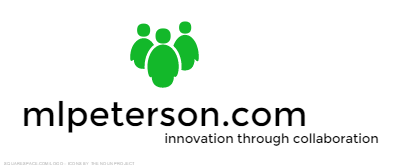Inside the culture of 18F, collaboration tools like Acano and Slack boost the agility of a remarkably productive, highly distributed workforce. The crack team that reshaped the US government’s use of digital technologies interacts under the premise that all collaboration sessions are remote. Progress updates, describing visual designs with words, leveraging asynchronous responses, and retaining session content are just some of the methods 18F’s project teams applies to a culture that does not bias local over distant participants (Kramer and Hertzfeld, 2015).
Technology Transformation inside the GSA (Verton, 2016)
"Face-to-face" weekly meetings no longer implies being in the same room. During the five-hour overlap in time zones, everyone at 18F jumps on the [Acano] video bridge. Meanwhile, Slack provides the organization with the real-time chatting glue and the text-based water-cooler effect of sitting across from co-workers stationed in different time zones. The two forms of collaboration are vital to 189F’s vibrant team culture, so what happens then they are integrated (rather than jumping between modalities)?
18F’s best practices for making distributed teams work (Kramer and Hertzfeld).
For enterprises looking to capitalize on the synergy of video and IM on steroids, they could turn to Cisco’s Spark. Microsoft’s Skype for Business is another enterprise solution, but according to Sorkker (2015), that product is too limiting. Smaller companies that have the programming chops may prefer to stitch up their own solution with alternatives like HipChat. For the rest of us in the cloud, Slack needs an agile video component and Skype does not cut it. Google Hangouts is ideal candidate, and the power of Slack is that it can tie together several different services, like Google Hangouts for working together in real time, Google Docs for tracking progress and PagerDuty for team notifications (Watson, 2014).
TURNING POINT is Mark Peterson's personal take on innovation and collaboration influencing today's corporate strategy. To have a conversion about what takes to implement collaborative solutions efficiently and at enterprise scale, contact Mark Peterson
References
Cover image: Howard, A. (2014). At 18F in GSA, U.S. seeks to tap the success of the U.K.’s Government Digital Services. E Pluribus Unum. Retrieved from https://e-pluribusunum.org/2014/03/12/at-18f-in-gsa-u-s-seeks-to-tap-the-success-of-the-u-k-s-government-digital-services/
Kramer, M. and Hertzfeld (2015). 18F’s best practices for making distributed teams work. 18F. Retrieved from https://18f.gsa.gov/2015/10/15/best-practices-for-distributed-teams/
Sorkker, A. (2015). What happens to Slack competitors? How are they doing now? Quora. Retrieved from https://www.quora.com/What-happens-to-Slack-competitors-How-are-they-doing-now
Verton, D. (2016). Exclusive: GSA Lobbying Congress For New Tech Service, Sources Say. Meritalk. Retrieved from https://www.meritalk.com/articles/exclusive-gsa-lobbying-congress-for-new-tech-service-sources-say/
Watson, C. (2014). 9 Slack hacks we couldn’t live without. Keen IO. Retrieved from https://keen.io/blog/105456820166/9-slack-hacks-we-couldnt-live-without



